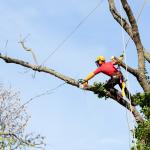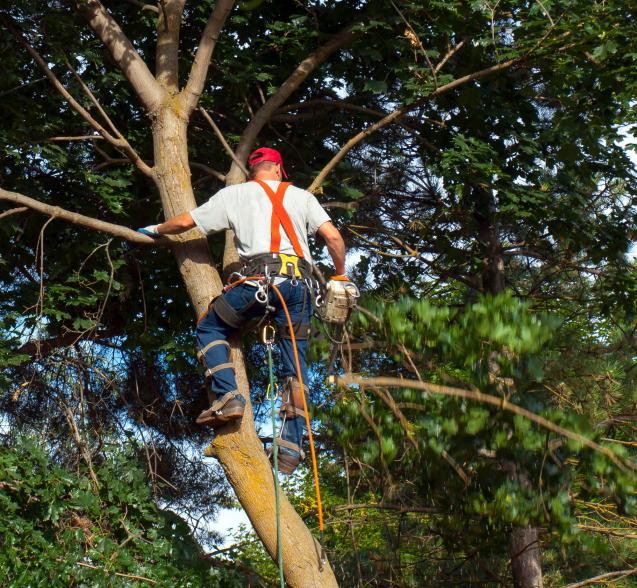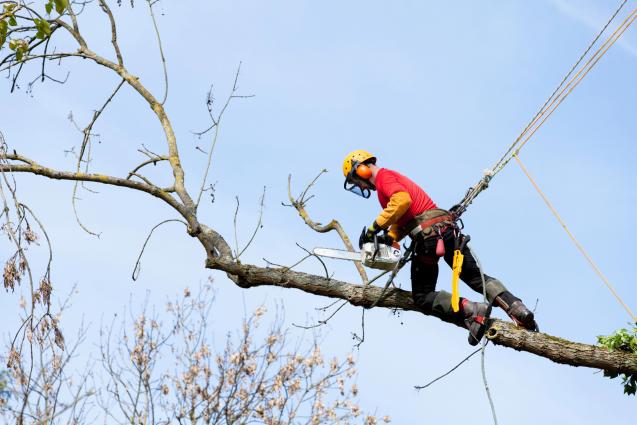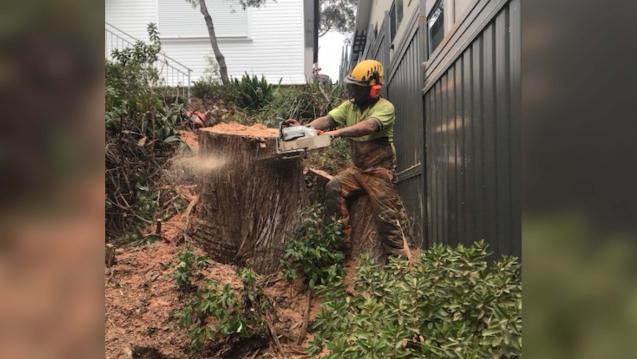
Tree Removal Regulations in Sydney’s Eastern Suburbs
By Wolf Trees and Gardens|December 21, 2020
Trees are an important part of our lives. They provide beauty, character, a place for animals to live, and history to our neighbourhoods. The economic and environmental benefits they provide are numerous, as are the health and social benefits. They provide a serenity that can reduce stress and fatigue. They can help us recover from illnesses, and they can even help lower the level of crime within a neighbourhood.
However, from time to time, you may need to remove, or prune, a tree, whether for its health, the safety of the people at a property, or aesthetics. When this time comes, check with your council for removal regulations before removing your tree. Not all trees can be removed without authorisation.
Here are some considerations for when it's time to remove your tree.
Tree Removal Application
The first step is to submit your tree removal application. The processing period is approximately four weeks, and in that time, a council member will visit to inspect the site and notify any neighbours of the application. The cost of the application is $78 for the initial tree and $29 for each additional tree. Once the application is approved, it is good for 12 months.
Protected Trees
Most trees are protected if they are 5 metres or higher or have a crown spread of 3 metres or more, according to the Sydney Development Control Plan 2012. Removing a protected tree will require consent from your council.
Check with the council in your area if you are unsure about the status of a tree. The council can provide you with a protected tree list for your community.
Pruning or Removing Trees Without Council Approval
Removal or pruning of certain trees does not require approval. If they are considered noxious, dead or dangerous, and are not in the Heritage Conservation Area or on the Significant Tree Register, you may remove the tree. In some cases, you may also remove trees less than 10 metres tall, provided they are not on the Significant Tree Register. Simply provide proof of what species your tree is, in the form of photographs, to the council prior to removal, and remove your tree.
Be sure that your tree truly is a species that can be removed, or you could face stiff fines and penalties for cutting down the tree.
Species That Can Be Removed Without Permission
Here are a few of the trees that can be removed without council permission. Noxious trees, such as these, can always be removed.
Other species that can be removed include:
This is not a complete and comprehensive list, so be sure to check with your local council.
Before cutting down any tree, it's a good idea to check with your council to ensure compliance in your neighbourhood. If the tree is too large to cut down on your own, contact a specialist in tree removal in the Eastern Suburbs of Sydney. We can help get the job done right.
However, from time to time, you may need to remove, or prune, a tree, whether for its health, the safety of the people at a property, or aesthetics. When this time comes, check with your council for removal regulations before removing your tree. Not all trees can be removed without authorisation.
Here are some considerations for when it's time to remove your tree.
Tree Removal Application
The first step is to submit your tree removal application. The processing period is approximately four weeks, and in that time, a council member will visit to inspect the site and notify any neighbours of the application. The cost of the application is $78 for the initial tree and $29 for each additional tree. Once the application is approved, it is good for 12 months.
Protected Trees
Most trees are protected if they are 5 metres or higher or have a crown spread of 3 metres or more, according to the Sydney Development Control Plan 2012. Removing a protected tree will require consent from your council.
Check with the council in your area if you are unsure about the status of a tree. The council can provide you with a protected tree list for your community.
Pruning or Removing Trees Without Council Approval
Removal or pruning of certain trees does not require approval. If they are considered noxious, dead or dangerous, and are not in the Heritage Conservation Area or on the Significant Tree Register, you may remove the tree. In some cases, you may also remove trees less than 10 metres tall, provided they are not on the Significant Tree Register. Simply provide proof of what species your tree is, in the form of photographs, to the council prior to removal, and remove your tree.
Be sure that your tree truly is a species that can be removed, or you could face stiff fines and penalties for cutting down the tree.
Species That Can Be Removed Without Permission
Here are a few of the trees that can be removed without council permission. Noxious trees, such as these, can always be removed.
- Hackberry (Celtis sinensis)
- Citrus (Citrus spp)
- Narrow and broad-leaved privet
- Oleander
- Wild or African olive
- Willow trees (Salix spp)
Other species that can be removed include:
- Tree of heaven (Ailanthus altissima)
- Bamboo trees
- Cotoneaster
- Rubber tree
- Wild-honey locusts (Non-cultivating)
- Norfolk Island hibiscus
- White cedar
- Mulberry
- Banana
This is not a complete and comprehensive list, so be sure to check with your local council.
Before cutting down any tree, it's a good idea to check with your council to ensure compliance in your neighbourhood. If the tree is too large to cut down on your own, contact a specialist in tree removal in the Eastern Suburbs of Sydney. We can help get the job done right.



